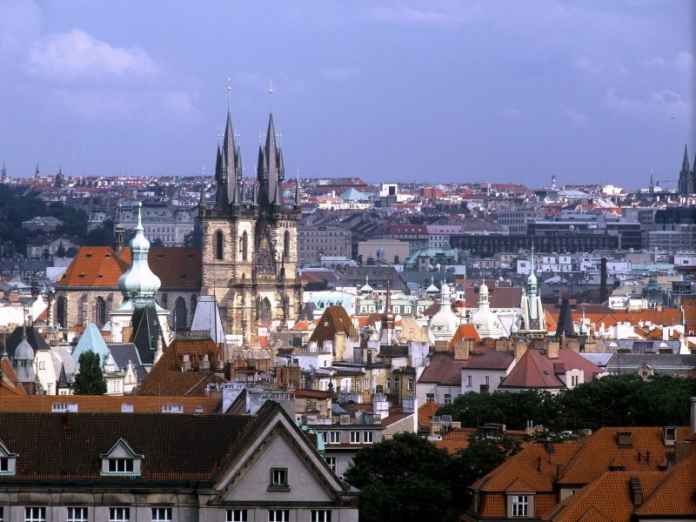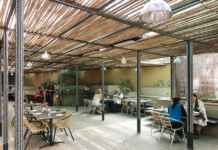Are you interested in visiting a city surrounded by ancient architecture, Castles and full of artistic activities. Then stop wondering, pack your bags, book your tickets and and get ready to explore Prague. Prague is the capital and the largest city of Czech Republic. It is one of the largest cities of Central Europe and has served as the capital of historic region of Bohemia for centuries.
Once the capital of the Roman Empire, Prague was founded more than 1,100 years ago and it features many historic attractions and buildings which survived destruction during the World Wars. It is a multi-cultural city full of art and unique architecture – the imposing Prague Castle, the unique Astronomical Clock, the historic Charles Bridge, the innovative Dancing House, Stiassny’s Jubilee Synagogue, and much more. It is also home for a touching testimony of Jewish history and culture.The name Prague is derived from an old Slavic root, praga, which means “ford”, referring to the city’s origin at a crossing point of the Vltava river.
Peak Season:
Just when autumn is around the corner is the perfect time to be visiting Prague. In the late spring and early summer months of April, May and June and in September. Specially June is particularly lovely as the city’s parks and gardens are in full bloom and it’s the time of the Music Festival, one of the many festivals that Prague hosts in the spring and summer. It is amongst the highlights in Prague. July and August tend to get the most rainfall and so it can spoil your most holiday plans but it is the time when you will need to check the entertainment options, as most opera houses/ plays/ festivals etc. tend to be limited in these months.
Sights of Attraction:
Charles Bridge: One of the city’s finest attractions, and is the main pedestrian route connecting the Old Town with the Lesser Town (Mala Strana) and Prague Castle. This magnificent structure allows visitors to enjoy the fairytale views of the Prague skyline. The wide expanse of the Vltava river flows beneath it, flanked on both sides by elegant buildings. Here you are truly in the centre of the city.
Dancing House: Daring, curvy outlines, which led its architects, Vlado Milunc and the American Frank O Gehry, to initially name it the “Astaire & Rogers Building”, after the legendary dance duo. The house stands out among the Baroque, Gothic and Art Nouveau buildings for which Prague is famous. The top floor of Dancing House is home to one of the city’s leading restaurants,Celeste Restaurant. Diners can enjoy delightful cuisine and magnificent views over the river and up to Prague Castle.
Prague Castle: Prague Castle is the largest medieval castle complex in Europe and the ancient seat of Czech kings throughout the ages. The castle buildings represent virtually every architectural style of the last millennium. It is Prague’s premier tourist attraction.According to the Guinness Book of World Records, the Prague Castle is the largest coherent castle complex in the world, with an area of almost 70,000 m² and have combined to create an intriguing mix of palaces, churches and fortifications, spread over 7 hectares (18 acres).
Places to change money in Prague:
You can get good rates in Prague to exchange cash for Czech Crowns, but be careful where you go. Our top tip for where to change money in the city centre is eXchange at Kaprova 15, near the Old Town Square – where you will get excellent rates and no commission.
Czech and International banks in Prague generally offer good exchange rates, but the commission varies, so ask what it is before you buy. The banks are mostly located around Wenceslas Square and en-route to the Old Town Square.
Be careful of the small currency exchange booths scattered around Prague. Some of them offer good rates, but in many of them, offers of 0% commission and confusing signs can mask a very poor exchange rate. If you are tempted to use them, ask what the total amount you will receive is before handing over any money.
Clothes to wear:
The weather is highly changeable at Prague, as in many Northern and Central European cities. On good days during spring, summer and autumn, visitors will find cool shirts, shorts, skirts and dresses most welcome. Sunscreen, sunglasses and summer hats can also be important. In the winter, you need a warm coat, and ideally waterproof shoes or boots in case of rain or snow. But even in the summer, bring a jumper and a waterproof jacket or umbrella, in case of a cold spell or a heavy shower.
While it is sometimes nice to dress smartly, and many people do, Prague is a fairly casual city, so restaurants, the opera houses, concert halls, theatres and other tourist venues do not have strict dress codes and will accept most forms of attire.
Legal Cautions:
Entry & Exit: A passport is required to visit the Czech Republic. The passport must be valid for at least three months beyond the date of your expected departure from that country. Before you leave, ask your transportation company about its requirements related to passport validity, which may be more stringent than the country’s entry rules.
A valid travel health insurance policy with minimum coverage of 30,000 euros is required to enter the Czech Republic. Travellers must also have proof of prearranged accommodation and sufficient funds for the duration of their stay in the Czech Republic.
Tourist Visa: Not required (for stays of less than 90 days)
Business Visa: Required
Student Visa: Required (for stays over 90 days)
Work Visa: Required
Customs:
Visitors are allowed to freely import the following: 200 cigarettes or 50 cigars or 250 grams of tobacco; 1 liter of spirits over 22% volume or 2 liters of fortified wine or sparkling wine, or 2 liters of still wine; 50 grams of perfume; 250ml of eau de toilette; as well as other goods to a value of about $225 (175€).
Restricted items include: Meat, meat products, milk and dairy products, certain plants, and wildlife as well as illegal narcotics (including marijuana), weapons, explosives, and pornographic materials. Travelers entering or leaving the country with more than 10,000€ in cash are required by law to make a currency declaration.
Transport: Use only officially marked taxis, such as Profitaxi, Cititaxi, or AAA (but not taxis marked AAA s.r.o.).
Tickets required to use public transit can be purchased at newspaper kiosks, metro stations, and most hotel reception desks. Riders without a valid ticket are subject to fines.
A road usage permit is required to drive on all major highways. These permits are available at highway gas stations and border crossings. The use of cellular telephones while driving is prohibited, unless fitted with a hands-free device.













